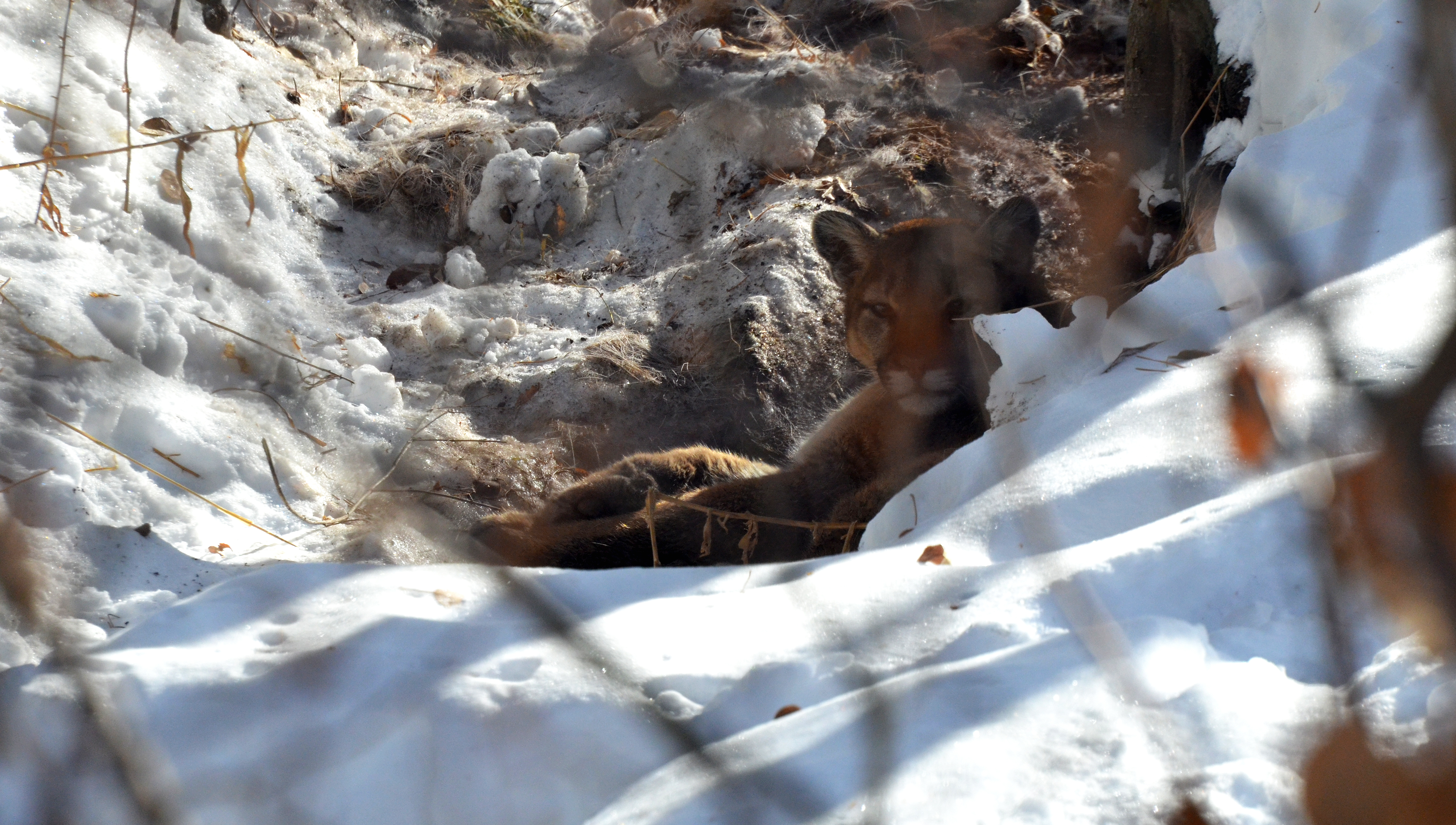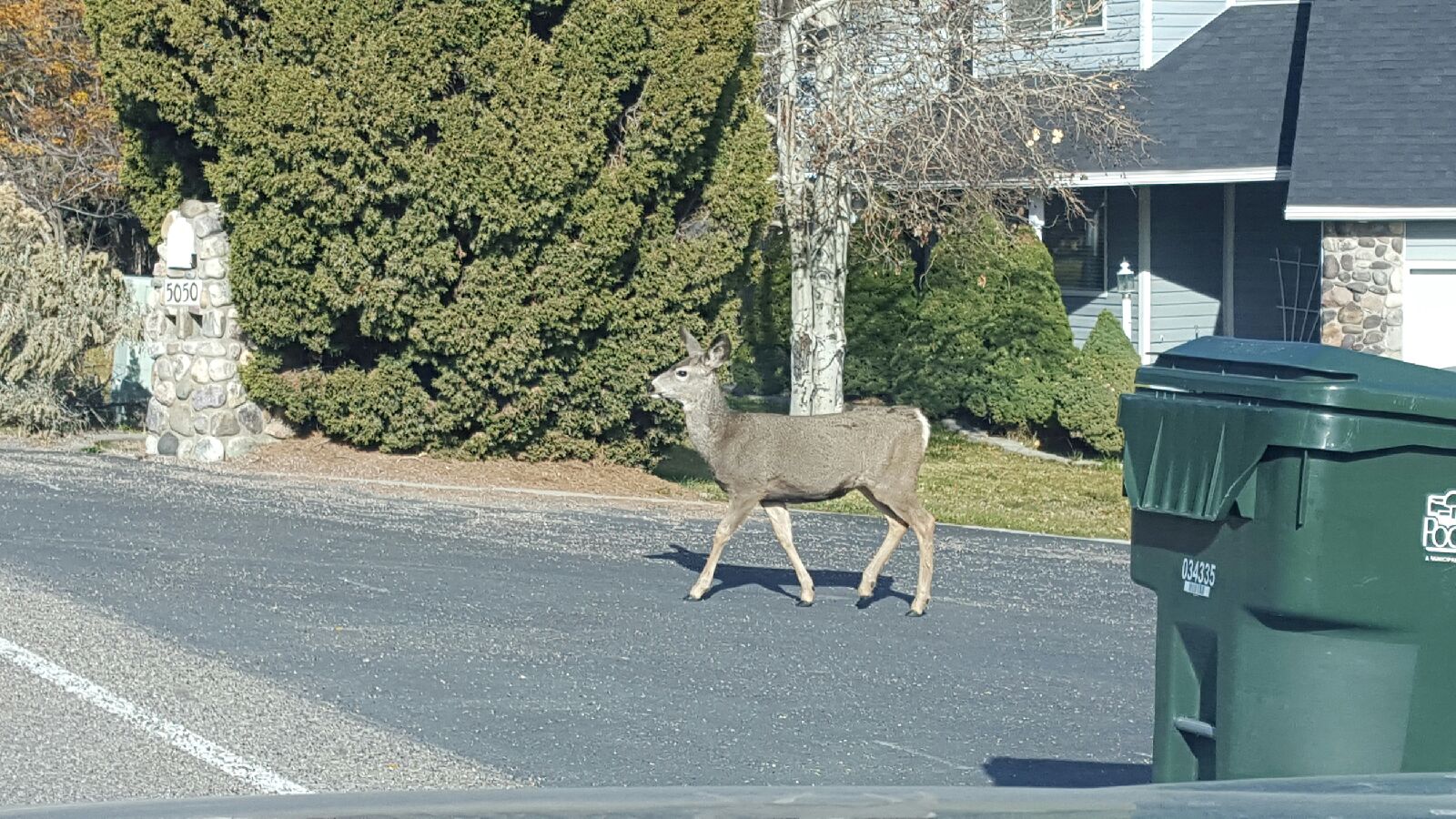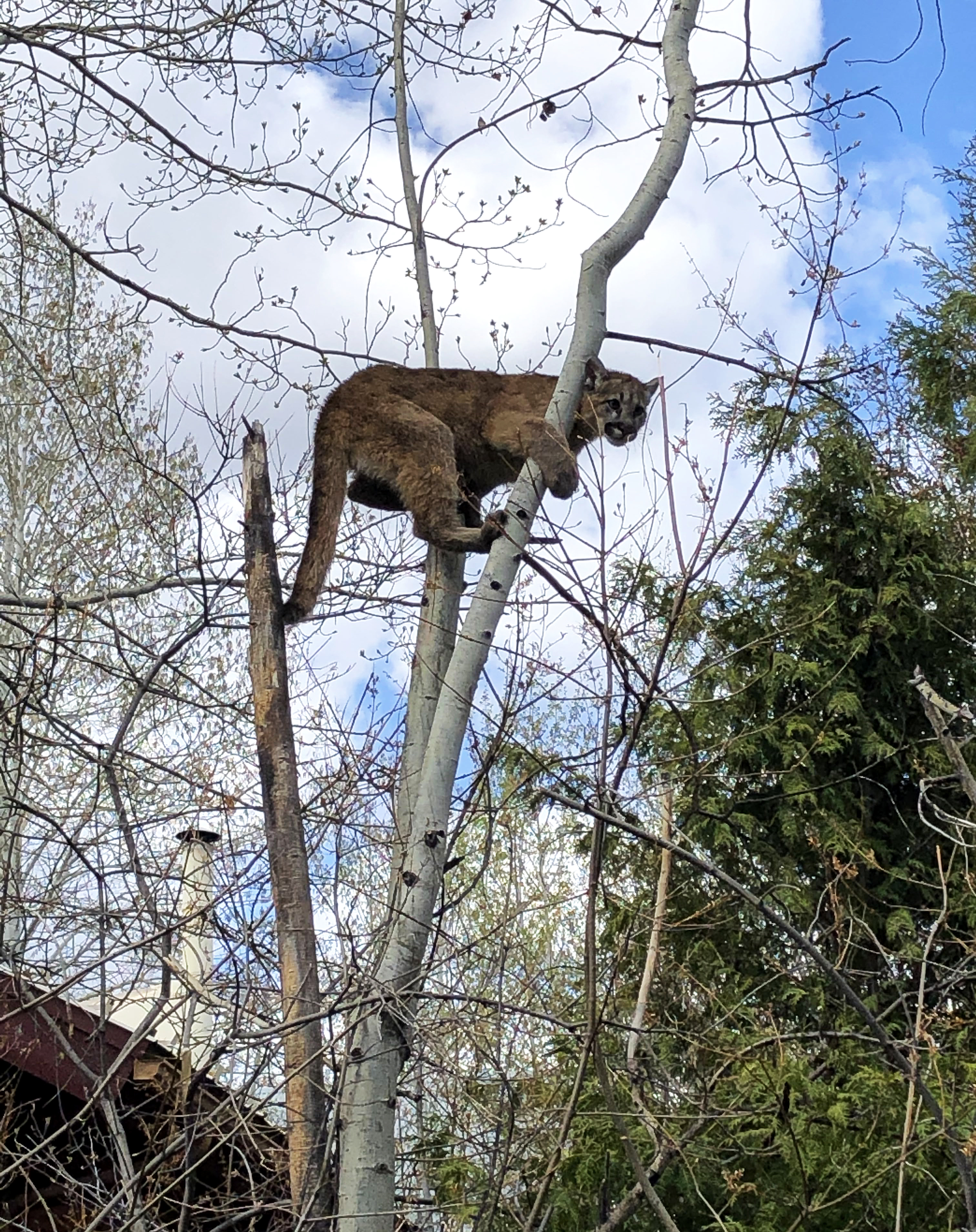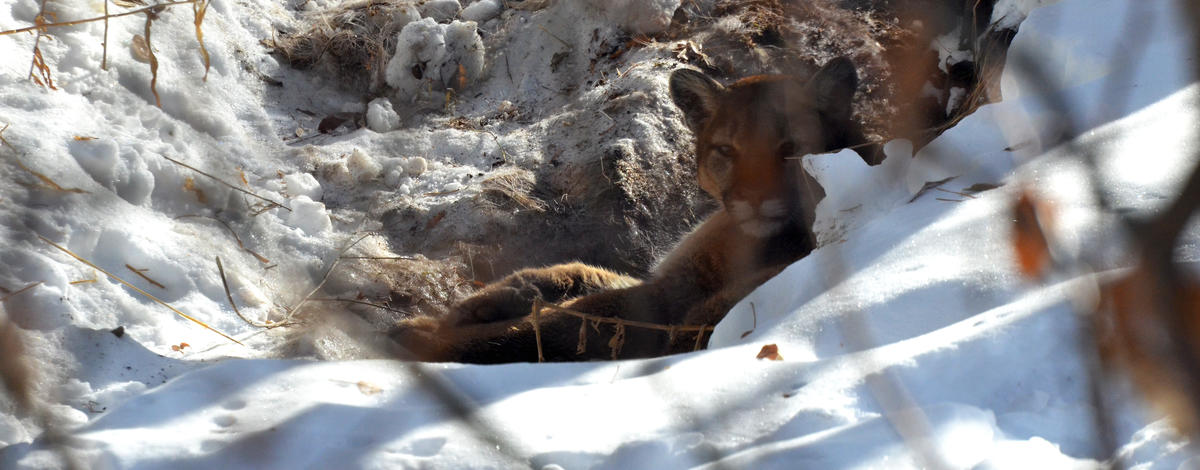Increasing reports of mountain lions in residential areas of Twin Falls and Kimberly have been received by Fish and Game over the last few weeks. Residents have reported that mountain lions have killed domestic livestock east of Twin Falls, and residents in Twin Falls and Kimberly have reported seeing or capturing security video of lions in and around residential homes and neighborhoods.
Understandably, local residents are concerned.
Fish and Game managers share this concern and are actively working to provide safety tips and suggestions to those who live in areas where mountain lions frequent.
When living close to wildlife, no matter the species, residents and visitors need to be vigilant and aware of their surroundings.

A mountain lion in a day bed near Ketchum, Idaho.
Residents are encouraged to visit a new website design by the Wood River Valley Wildlife Smart Communities Coalition that provides local residents with information about wildlife commonly associated with human-wildlife conflicts, such as with mountain lions. The new website can be found at www.wrvwildlifesmart.org.
Prey can be a wildlife attractant
Mule deer, which are a preferred prey for mountain lions, are increasingly common in neighborhoods along and near the Snake River Canyon. While many residents like to see deer where they live these abundant deer herds can bring unintended consequences since they can also attract mountain lions into these same neighborhoods.

Mule deer are becoming a common sight in many Idaho communities.
Personal safety
Mountain lions have been living throughout the Magic Valley long before human development began. Most residents, even those who have lived there for years, have never observed one. However, we are hearing from residents that they are now seeing these secretive cats as they pass through their neighborhoods. Some reports include sightings of lions during daylight hours, which is not typical behavior.
Wildlife managers agree that if a person is in close proximity to a lion, meaning they see it, they should:
- NEVER run away from a mountain lion. The lion’s instinct is to chase and ultimately catch what they perceive as a potential prey.
- NEVER turn your back on a lion. Always face them while making yourself look as large as you can. Yell loudly, but don’t scream. A high pitched scream may mimic the sound of a wounded animal.
- SLOWLY back away while maintaining eye contact with the lion.
- Safety equipment you may choose to carry could include bear spray, a noise device, like an airhorn, and if you walk in the dark, a very bright flashlight.
- If you are attacked, fight back!
Remember to use all of your senses to detect if a mountain lion is near. Using a light to help you see your surroundings is very important, both in your yard, or as you walk or run through your neighborhood. If you run or bike for personal fitness, use caution when wearing headphones which take away your ability to hear if a lion, or any other wildlife, is giving you signals that you’re too close.

A juvenile mountain lion in a residential area in the Wood River Valley.
Pet safety
Mountain lions are opportunistic predators, meaning they don’t know when their next meal will happen, and will often attempt to take prey when it presents itself. A lion may perceive a pet as prey. To keep pets safe, owners are strongly encouraged to follow these safety tips:
- Keep your pets on a leash.
- Watch the pets’ behavior, since they may sense the lion before you can actually see them.
- Do not feed your pet outside, or leave their food dishes outside. The mountain lion will not typically be attracted by the food, but the food could attract other wildlife, such as raccoons or skunks that could be looked at as prey by a lion.
- Before letting your pet outside, turn on lights, make noise and look to ensure the yard is clear of wildlife. Do not assume that a privacy fence will exclude a mountain lion from your yard.
- Accompany your pet outside if possible.
Homeowner safety
By nature, mountain lions are shy and will make every effort to avoid contact with humans. Continued reports of mountain lions throughout the area over the last several months makes it appear there are some lions that have become more accustomed to living near towns and neighborhoods. Homeowners can do several things to make it less likely that a mountain lion would pass through, or live near their homes and neighborhoods. These include:
- When leaving your house, be aware of your surroundings. Look and listen for signs of wildlife near your house.
- Do not feed wildlife! Unnaturally feeding deer will bring in predators to the feed site.
- Strongly encourage your neighbors to not feed deer. To effectively keep predators out of neighborhoods everyone must do their part.
- Do not leave your household garbage outside and unsecured. As with pet food, the garbage will not typically attract a mountain lion, but it might attract other wildlife that would be considered prey by a lion.
- Ensure that a lion cannot get under your patio or deck. These spaces can be a perfect location for a daybed.
- Place covers over window wells which can also be a place for a lion to use as a day-bed.
- Install motion sensor lights which may discourage wildlife from staying in your yard. Lights can be directed to minimize impact on your neighbors.
Reporting mountain lion sightings and encounters
Magic Valley residents should immediately report any encounter with a mountain lion that results in an attack to the Magic Valley Regional Office at (208) 324-4359 during business hours, 8 a.m. – 5 p.m, Monday – Friday or by calling 911.
Mountain lion sightings and observations should be reported to the Fish and Game, Magic Valley Regional Office at (208) 324-4359 or reports can also be made to the Twin Falls County Sheriff at (208) 736-4040.

